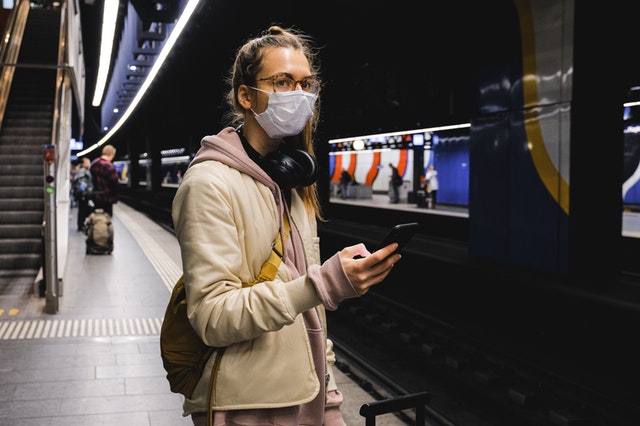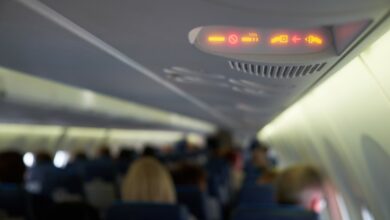A
A
A
Public transit is a staple of society in many large cities. However, since the onset of this pandemic, it’s become increasingly dangerous to ride buses, trains and airplanes on a daily basis. Let’s take a look at how COVID-19 is forcing us to reconsider public transit.
Air travel
Air travel has been hit extremely hard by the coronavirus. As you might imagine, nobody wants to be stuck in a flying tube with hundreds of other strangers for hours at a time. Airlines have seen massive downswings in the number of passengers traveling per day. No matter how many precautionary measure you might try to take, the virus is always a threat. Masks help, but over an extended period of time, droplets can still spread. Ventilation in the aircraft might seem promising as well, but the air is bound to be recycle at some point. If just one person on the airplane has COVID-19, it could spell disaster for the rest of the passengers. Even if you lock down an entire row of seats with your family who is known to be free of the virus, it is simply so contagious. The row behind you and the row in front of you are bound to be threats. When you’re waiting at the gate, you’re sitting among many other travelers. Boarding the plane brushes you against more passengers as you rush to find your seat. As for the bathroom, that is clearly a hotspot for infection. Many travelers are simply postponing their vacations until the pandemic dies down.
Read More »
Transit by bus
Although a bus is a much smaller vessel, it’s still dangerous nonetheless. Buses aren’t equipped with as much technology as airplanes, so it’s harder to mitigate the spread of the virus. Ventilation is nearly nonexistent on some buses. Passengers don’t always have control over the windows, and the status of air conditioning might be unknown as well. Nobody cleans the seats between uses, so your seat might be infected by the previous passenger. When you get on, you often have to swipe a card at a machine, adding to the number of surfaces you contact. For some people, these rides are a must to commute to work or school. However, people are quickly realizing that it’s best to avoid this type of transit at all costs. If you have access to a personal car, this is a much better option for the next few months. Alternatively, carpool with your friends who you can at least trust to be responsible concerning the virus. In essence, public buses have many unknowns that simply add doubt and risk to the pandemic.
Transit by subway
Similarly, transit by subway carries its risks. At certain stations, you have to wait for long periods of time among hordes of passengers. The subway can be even more crowded, and sandwiching yourself between masses of people is the last thing you want to do on a weekday morning. In major metropolitan areas, the government is working to implement social distancing measures that will make subway transit safer. Nevertheless, it’s still a long way until any of us can feel completely safe from the virus. For now, many riders are forgoing subway travel until security standards are most established.
Ride sharing services
Ride sharing services such as Uber fall into an interesting class of transportation. At first glance, it might seem that cars and trucks are some of the safest options around. If the space isn’t shared by many other people, surely you can’t be at risk, right? That’s true, except for the fact that these vehicles are difficult to monitor. While it’s recommended that the driver wipes down the interior after every usage, we all know that this isn’t guaranteed to happen. Some ride sharing services are reducing the number of passengers or limiting trip durations to make things safer. Moreover, some companies are leasing these vehicles to their employees, further complicating things. In the case that the service needs to identify liability due to a case of the virus, it will be extremely difficult to pinpoint the source. To avoid signing waivers and worrying about your health, it might be best to reconsider these ride shares until things stabilize.
Cruises
Cruises at sea have also been postponed until the pandemic ends. Much like all of the vehicles listed above, a large ship is simply a breeding ground for the virus. There are so many enclosed spaces and public areas that even a handful of cases can grow exponentially. We have already seen evidence of this in the cruises that got stuck at sea as the pandemic was developing. Some cruise lines are already predicting permanent changes to the industry. The days of mega ships may be gone due to their sheer size. Hand washing stations could become the norm as you turn every corner. As much fun as cruises are, they can quickly turn into a nightmare if the whole ship becomes infected and orders are given to stay in your rooms. At the very least, you need to ask yourself a few questions before boarding a ship. Am I at risk for infection? What are my underlying conditions? Is the ship prepared to handle an outbreak? If you have doubts about any of these answers, you want to be on the safe side and find another means of transit or a vacation. Considering that cruises aren’t even functional right now, you have some time to make these decisions.
Conclusion
As long as the coronavirus is around, public transit will never truly be 100 percent safe. In every city across the country, mayors are looking for ways to keep their citizens in good health. For now, it’s best to reconsider public transit and opt for more private transportation while the pandemic is raging.






